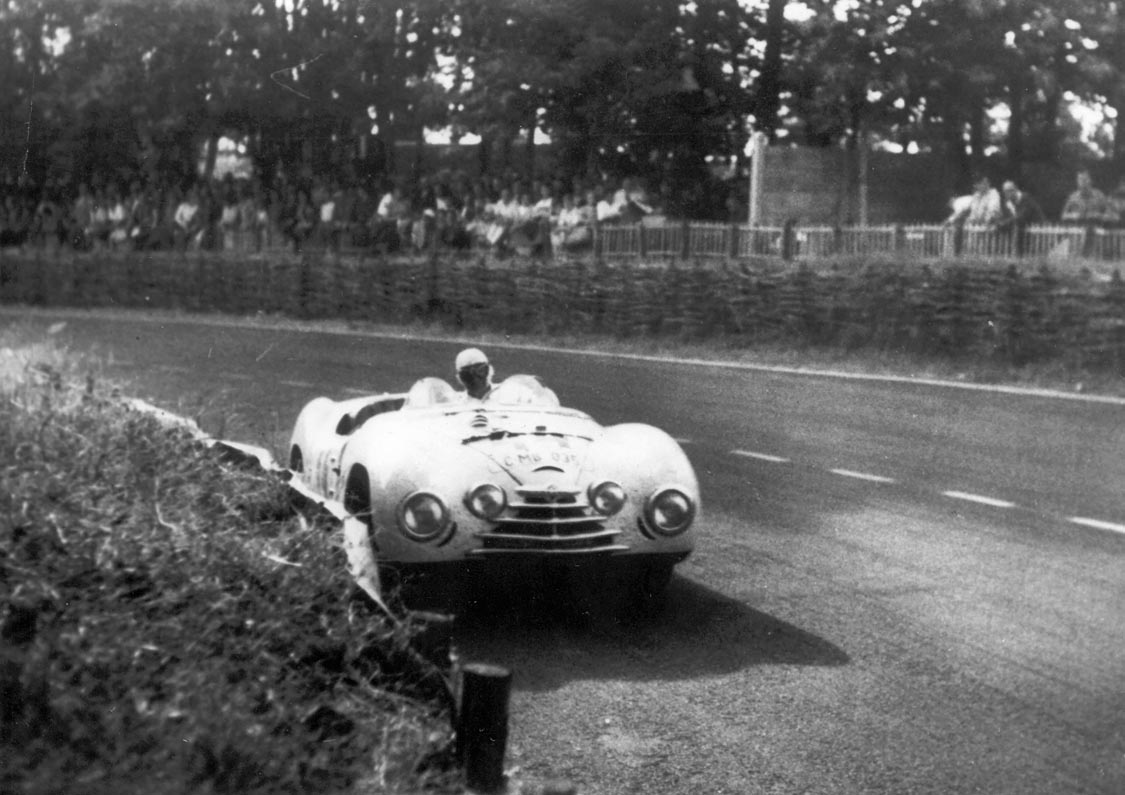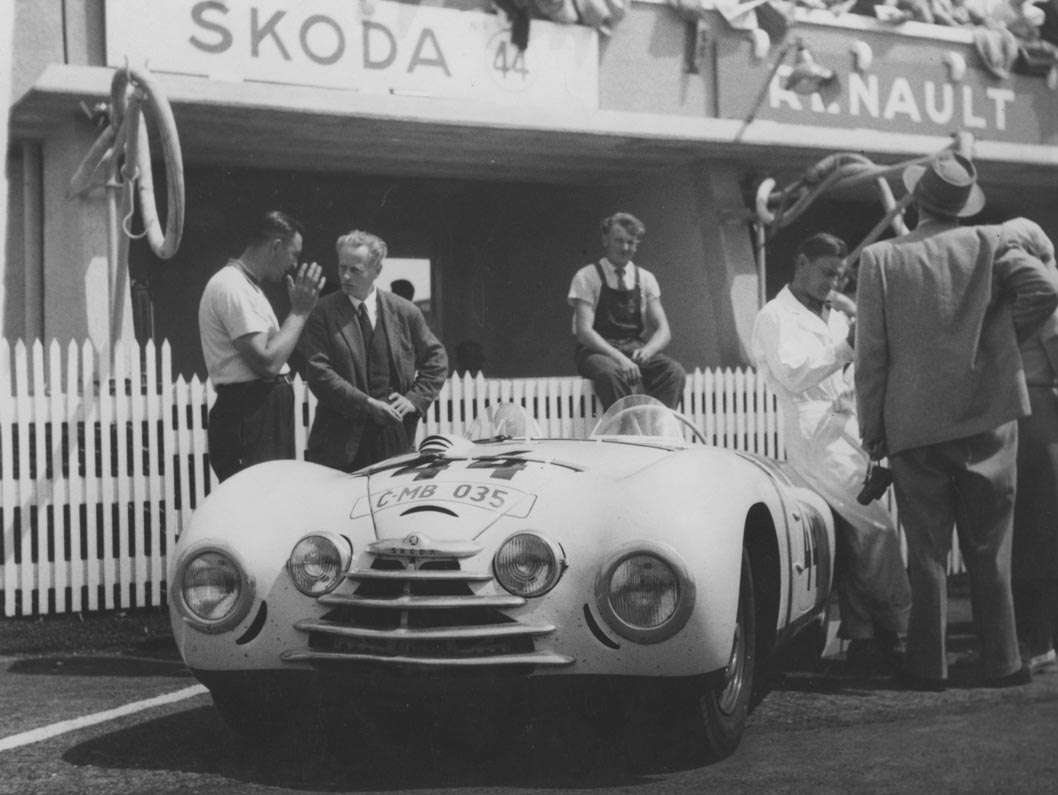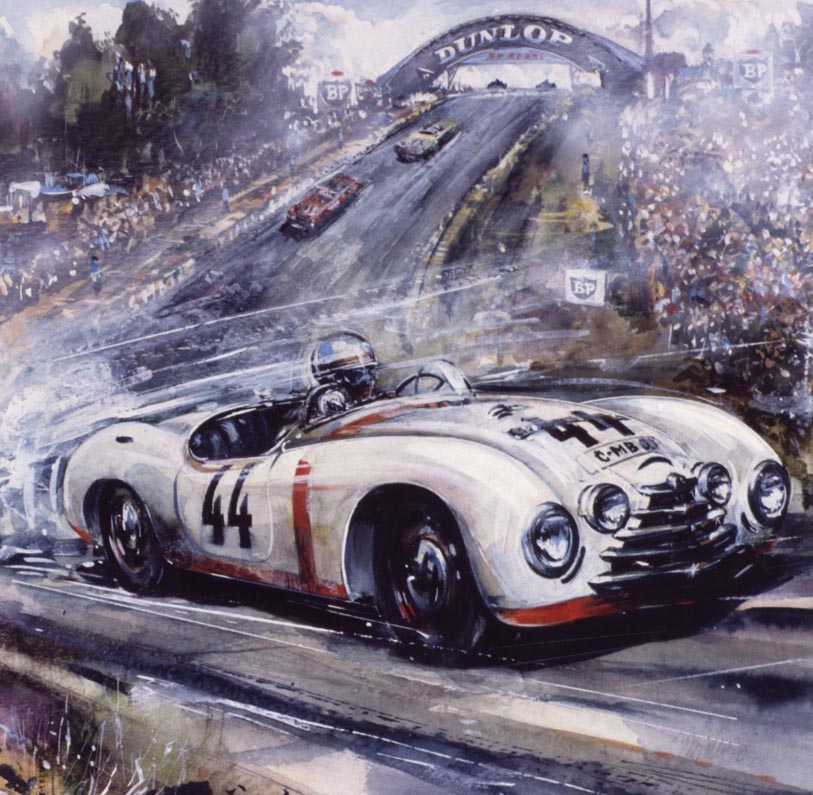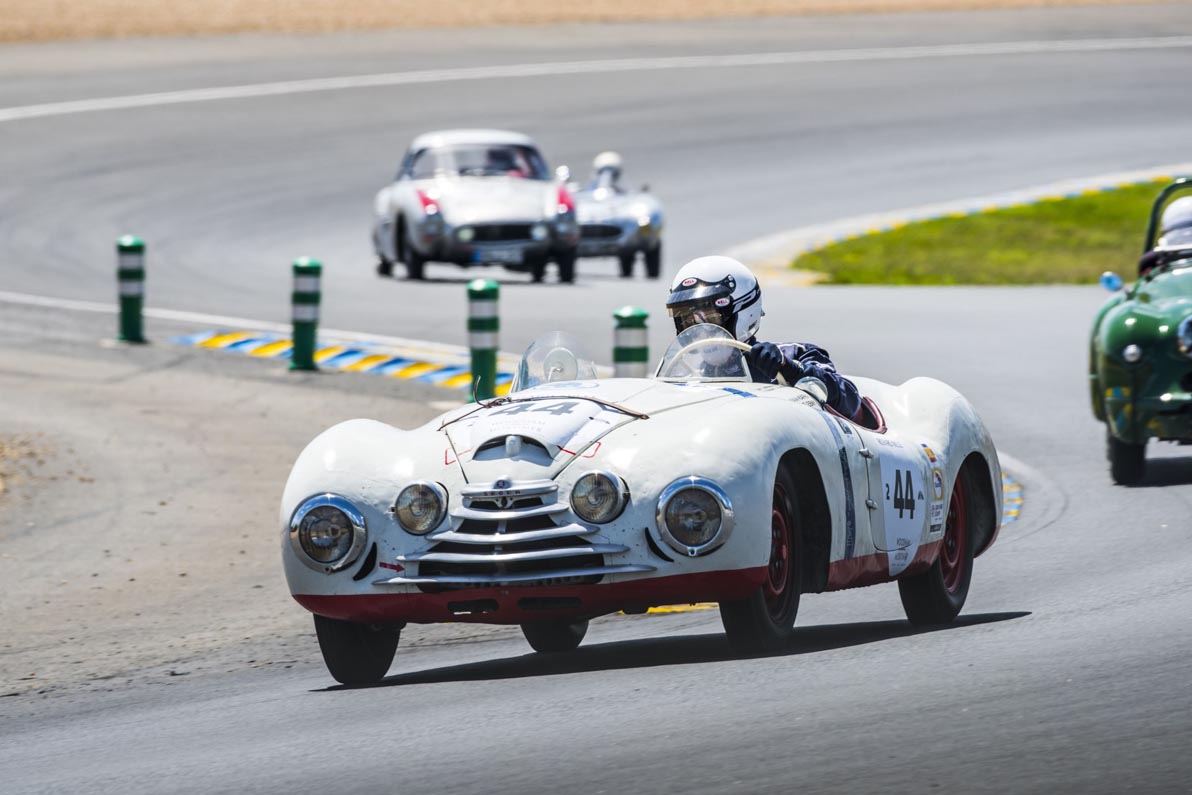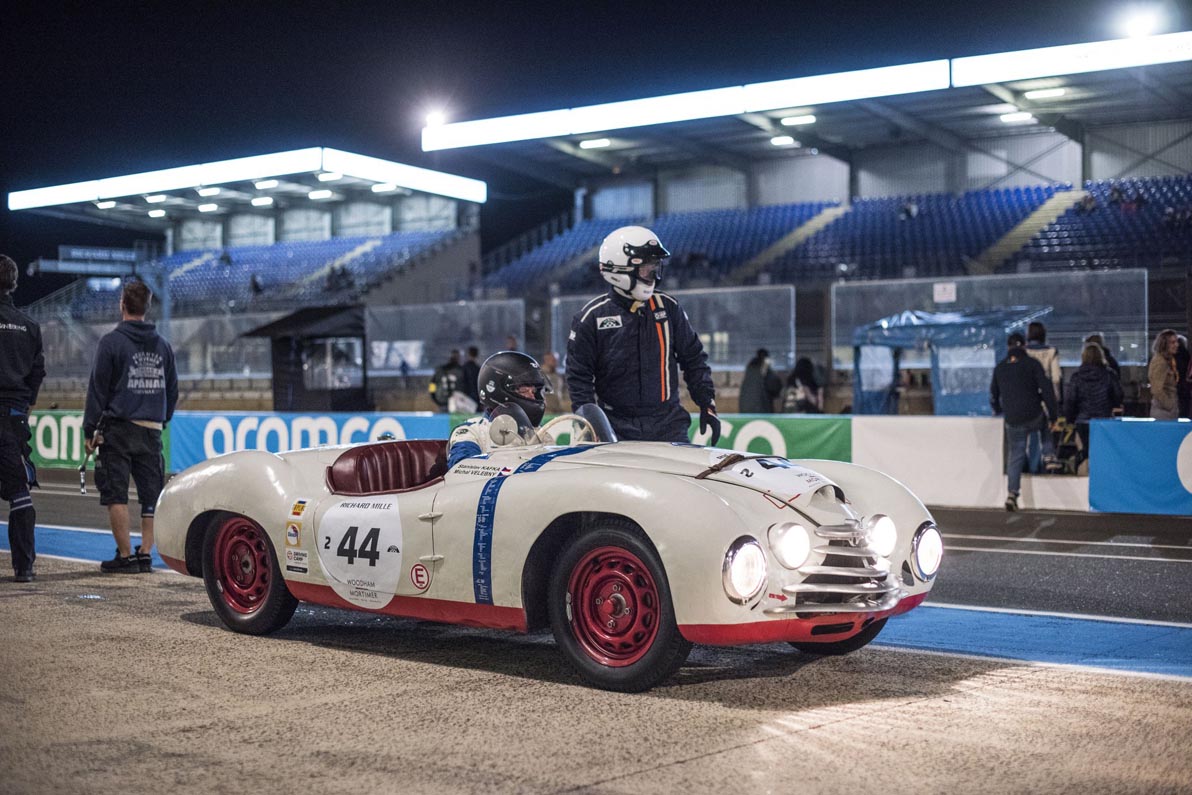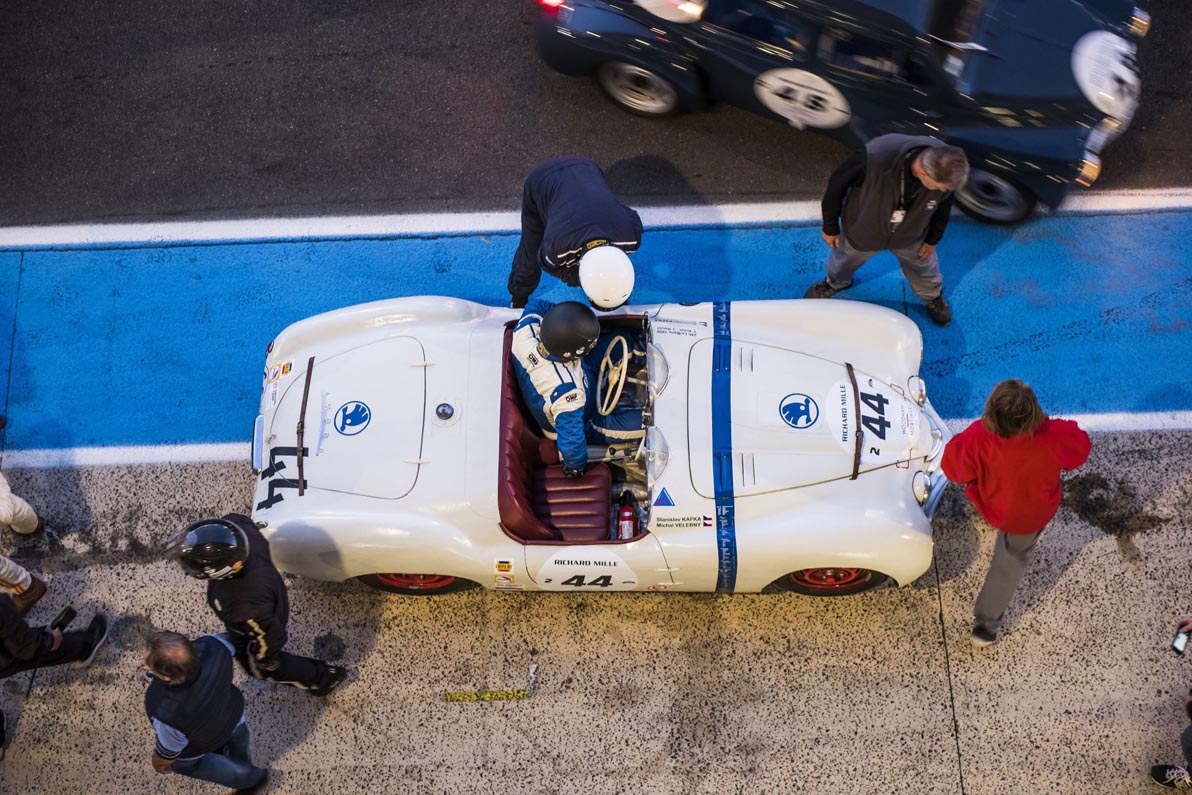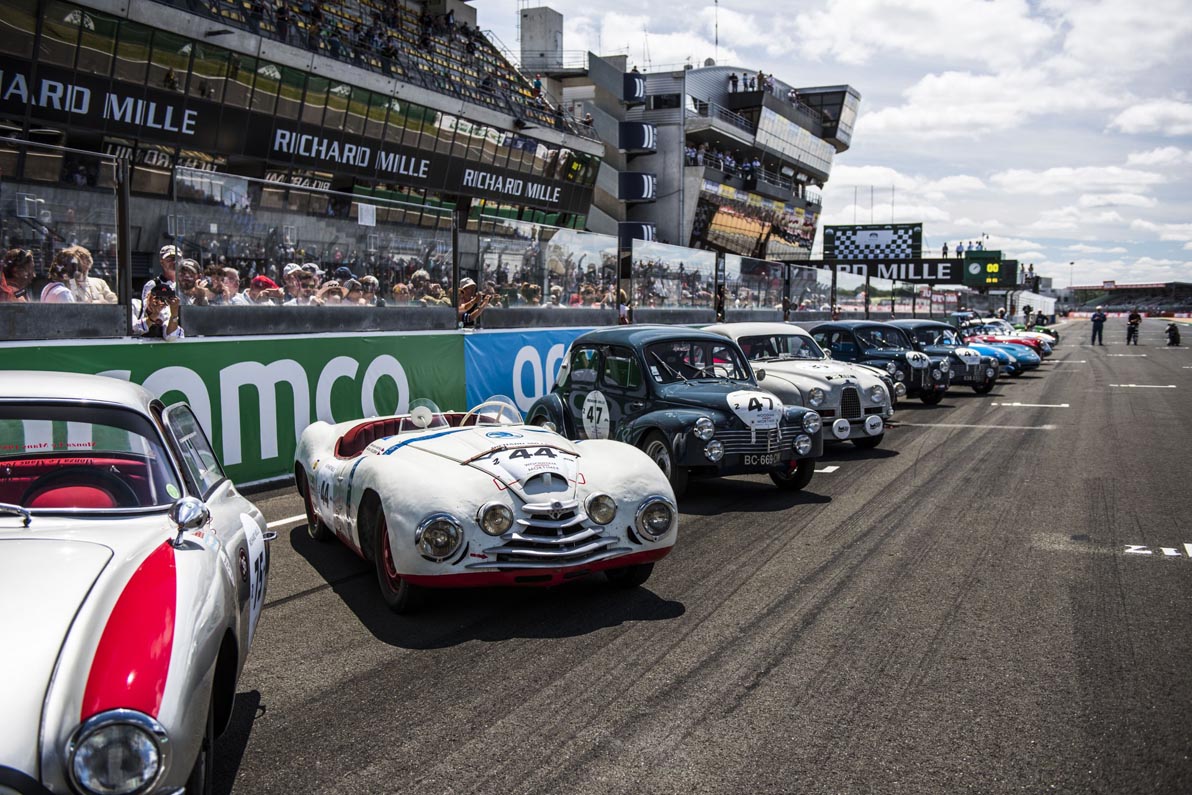
Vehicles from Mladá Boleslav have been taking part in motorsport events since 1901. The ŠKODA Sport ‘Tudor’ derivative, nicknamed ‘placka’ (pancake) on account of its low-profile aluminium body, competed in the 1950 24 Hours of Le Mans. The vehicle is now making its return to the legendary race track on the Sarthe this year at the Le Mans Classic.
The Mladá Boleslav-based manufacturer has been active in motorsport for 121 years. It has since gone down in history with numerous special racing and rally models. In 1946, ŠKODA made its mark with the attractively designed Model 1101, nicknamed the ‘Tudor’ – a Czech phonetic adaptation of the English adjective ‘two-door’. Demand for the new model quickly grew internationally, not least because of its numerous motorsport successes. The car took part in the 2,649 km Rally Rajd Polski (1948) as well as the South American Rally Montevideo – Melo – Montevideo and the circuit race in Spa, Belgium. In this event, three ‘Tudor’ four-seaters covered 1,972 km in 24 hours and crossed the finish line together.
At the Czechoslovak Grand Prix in Brno (1949), the ŠKODA Sport successfully held its own against the competition with numerous parts from the production car and hand-made aluminium pontoon bodywork. The vehicle was then adapted to meet the regulations of the 24 Hours of Le Mans. At the Sarthe, the works team Václav Bobek/Jaroslav Netušil took to the track for the 18th staging of the race on 24 June 1950.
The ŠKODA Sport had two extra headlights for the night hours of the race, while special openings in the radiator grille improved the cooling of the drum brakes on the front wheels. In addition, the wheelbase had been extended to 2,150 mm to ensure greater driving stability. Including tools and spare parts, the vehicle weighed in at a mere 700 kg. The vehicle featured a water-cooled four-cylinder engine with a displacement of 1,089 cm3, and the electrics came from the Czech manufacturer PAL 12 V. The ŠKODA Sport delivered an output of 50 hp (37 kW) at 5,200 rpm mounted on bias-ply Barum tyres. It ran on a special fuel mixture of petrol, ethanol and acetone. The top speed was 140 km/h, and the fuel consumption was low for its time at 12 litres per 100 km. As a result, the Škodians did not have to refuel as often as many of their competitors.
During the first 13 hours of the race, the driver team Bobek/Netušil fought their way to second place with their ŠKODA Sport in the under 1,100 cm3 category and a sensational fifth place overall based on the power coefficient. However, a minor technical defect prevented the team from reaching their potential; the regulations prevented it from being rectified on site. In the 121st lap of the race, the piston pin circlip broke. According to the regulations, the crew was only allowed to use the spare parts and tools on board, but the circlip they needed was not among them. The following year, the carmaker planned to field two reworked ŠKODA Sports. However, the political situation prevented this from happening. Thus, the appearance in June 1950 is still to this day the last time a Czech vehicle with a Czech crew would take part in the 24-hour race in Le Mans.
Return after 72 years: Le Mans Classic 2022
The 24-hour race in Le Mans was held for the first time in May 1923 and historic vehicles now also race on the 13.626-kilometer circuit every two years as part of the Le Mans Classic. Due to the coronavirus pandemic, the ŠKODA Sport’s appearance to celebrate the the 70th anniversary of its Le Mans start had to be postponed from June 2020 to July 2022.
The car that had previously competed in the 1950 24 hours of Le Mans entered the event for the first time this year. The painstakingly restored ŠKODA Sport was driven by Stanislav Kafka and Michal Velebný, the head of the restoration workshop at ŠKODA AUTO. His grandfather Josef Velebný had originally designed the bodywork of the ŠKODA Sport. Just as at its first start in 1950, the car took to the track again this year with the number 44. The second of only two ŠKODA Sports ever built took part in the Le Mans Classic back in 2006.
Michal Velebný comments on the start of the Le Mans Classic: “After a six-year renovation, this year we managed to bring the project of returning ŠKODA Sport to Le Mans to a successful goal. The car was able to cope with regular careful maintenance during a difficult weekend, avoiding major technical difficulties. It’s an amazing feat for our 73-year-old car.”
There are numerous individual races in the Le Mans Classic, and registered vehicles from all construction years from 1923 to 1981 are eligible to compete. The organisers divide these into six basic groups and various special categories. The ŠKODA Sport entered the 2022 event in the second group alongside vehicles built between 1949 and 1956.
Each vehicle category competes in three 43-minute heats at the Le Mans Classic. After each half race, the cars pit for a driver change. The last leg begins with a classic Le Mans start: After the starting signal, the drivers sprint to their cars, jump behind the wheel, start their engines and hit the track.
The chequered flag is waved from the 43rd minute of the race, as soon as the fastest car crosses the finish line. The final standings are determined by the number of laps completed and the time difference between them and the winner. The different technical specifications of the participating vehicles in the respective categories are also taken into account in a separate classification where a special coefficient is the determining factor. In another classification, the vehicles that drove in the various groups with the same starting numbers are aggregated according to teams.
In the packed Class 2 for cars from 1949 to 1956, the crew of Stanislav Kafka / Michal Velebný gave very balanced performances during qualifying and competition rides. The Czechs wiped the performance manko of the car on stronger or younger rivals with a technically clean ride, which earned them 47th place out of 74 crews in the overall category ranking. In the order recalculated according to the coefficient influenced by the power and engine capacity, the Czech crew is even in 43rd position. The victory was taken by the Jaguar D-Type from 1954.
